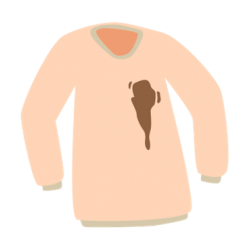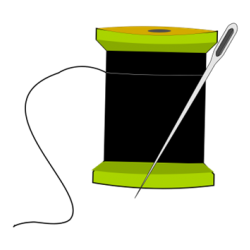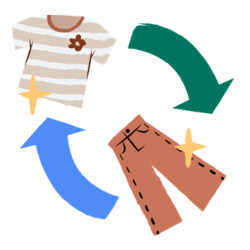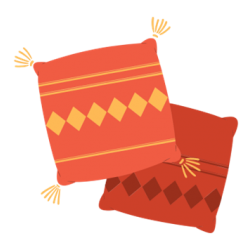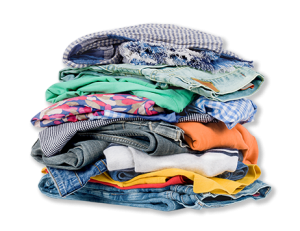
Did you know that we send over 39 million pounds of textiles such as clothing, sheets, and towels to the landfill each year? Coupled with the enormous environmental impact textile production has on the environment, and we’ve got a problem.
Only about 15% of used clothes and other textiles in the United States get reused or recycled. The other 85% head straight to the landfill or incinerator. This wastes scarce resources, contributes to climate change and pollutes waterways.
Although textile recycling is available, the best way to reduce these environmental impacts is by reducing the amount of textiles we purchase, use, and dispose.
Environmental Impacts of Clothing
The global apparel industry generates an estimated 92 million tons of textile waste annually. Of the fabric delivered into the apparel supply chain, 15% ends up on the cutting room floor as waste. Thirty percent of all retail garments produced are not sold, and must be disposed of.
On average, each person in the United States discards roughly 103 pounds of textiles annually. According to CalRecycle, more than 700 gallons of water are used to produce one cotton t-shirt or one pair of jeans. The climate impact of manufacturing one t-shirt is equivalent to driving a car for about 10 miles. The garment industry globally produces 150 billion pieces per year, which is enough for every person on the planet to have 20 new pieces of clothing per year.
Learn more
Read
- Textile Stewardship: California Policy, Pilots, Research, Articles (California Produce Stewardship Council)
- Your Clothes Can Have An Afterlife; Facilitating a Circular Economy for Textiles (NIST Reports)
- Polyester Fibers and Textiles (Defend Our Health)
Watch
Map
- California Textile Resource Map (CPSC): Factories, Recyclers, Reuse, Repair, & Upcycle, Collectors
Innovation
- Redesigning the Future of Fashion (Ellen Macarthur Foundation)
- Circular Startup Index: Fashion & Textiles (Ellen Macarthur Foundation)
How to Manage Textile Waste Responsibly
Most of the 39 million pounds of textiles we send to the waste stream each year can be reused or recycled into insulation material, flooring, packaging, or cushioning in stuffed toys, insoles, and bags.
At the larger charity thrifts, like Goodwill and Salvation Army, scraps and seriously damaged items are cut into industrial rags or shredded into pulp. The shredded fabric, for the most part, will become mattress stuffing, insulation, or some other type of padding.
Individuals can choose to repair and restore the textiles they have, keep textiles in circularity through reuse, repurposing, redistribution, before being downcycled, shop second hand, and take the time and effort to keep textiles out of the landfill as possible. Shop with circularity in mind by choosing textiles made from one fiber type. While textile recycling technologies to create new fibers out of textile waste are expanding, recycling fabric with two or more fibers is in it's infancy.
Search RE:Source to find local organizations that accept donations of textiles, repair and/or clean ripped/torn/stained linens/blankets/towels, clothing, shoes, undergarments, and socks, and upcycle and downcycle textiles.
